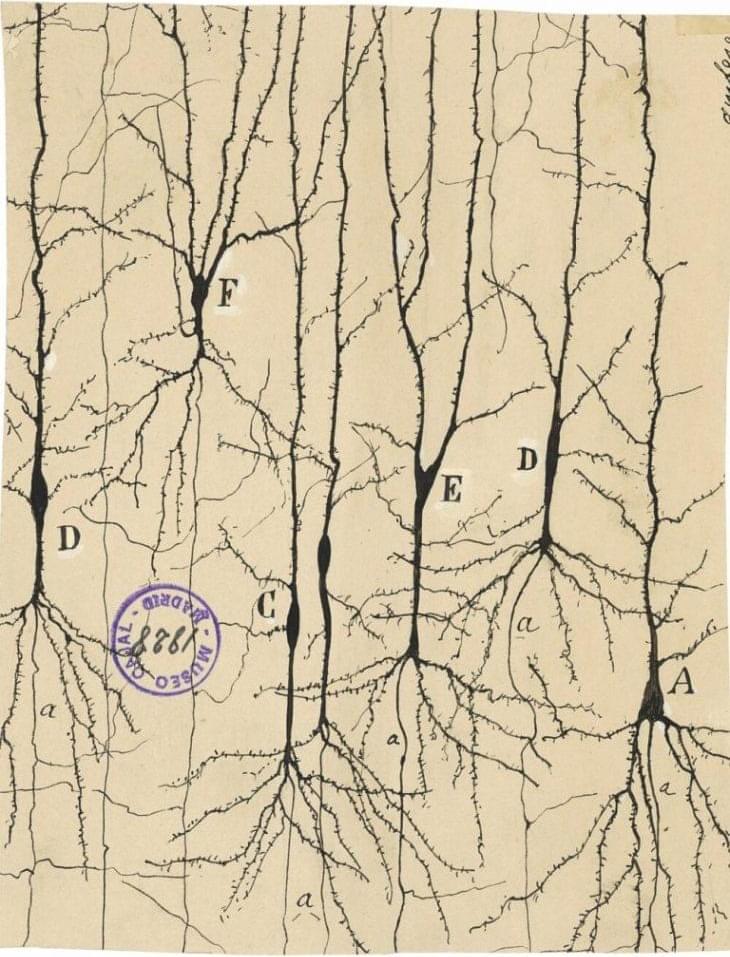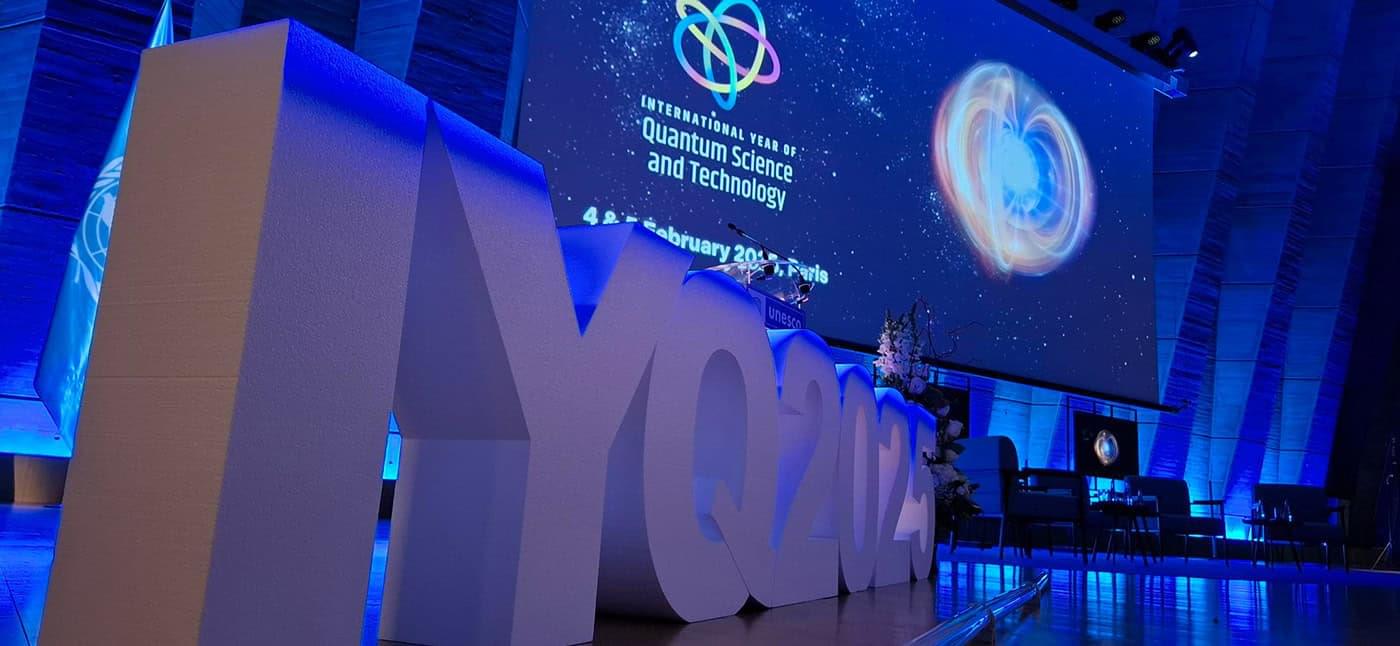A century of neural network science has brought us to the precipice of a new age of artificial intelligence.



Matter in intergalactic space is distributed in a vast network of interconnected filamentary structures, collectively referred to as the cosmic web. With hundreds of hours of observations, an international team of researchers has now obtained an unprecedented high-definition image of a cosmic filament inside this web, connecting two active forming galaxies—dating back to when the universe was about 2 billion years old.
A pillar of modern cosmology is the existence of dark matter, which constitutes about 85% of all matter in the universe. Under the influence of gravity, dark matter forms an intricate cosmic web composed of filaments, at whose intersections the brightest galaxies emerge. This cosmic web acts as the scaffolding on which all visible structures in the universe are built: within the filaments, gas flows to fuel star formation in galaxies. Direct observations of the fuel supply of such galaxies would advance our understanding of galaxy formation and evolution.
However, studying the gas within this cosmic web is incredibly challenging. Intergalactic gas has been detected mainly indirectly through its absorption of light from bright background sources. But the observed results do not elucidate the distribution of this gas. Even the most abundant element, hydrogen, emits only a faint glow, making it basically impossible for instruments of the previous generation to directly observe such gas.
Scientists believe that the solar system could be entirely SURROUNDED by alien life!
This is Unveiled, giving you incredible answers to extraordinary questions!
Find more mind-bending videos here:
What If Humanity Was a Type II Civilization? — https://youtu.be/y6Aj_bnZ3Gs.
What If Humanity Was a Type IV Civilization? — https://youtu.be/pKOpYkmUfv0
Are you constantly curious? Then subscribe for more from Unveiled — https://wmojo.com/unveiled-subscribe.
#Aliens #UAP #SolarSystem #Space #Science #WhatIf
Whether you’re a surly gang of bosons or a law abiding fermion, what a perfectly chilly day for keeping cooling Quantums…and who best to talk Quantum coolness than Deutsches Zentrum für Luft-und Raumfahrt (DLR)’s Quantum Queen #LisaWoerner! I cannot FREAKING wait to be talking with her again today on I’m With (Stargate) Genius…live,…if you’re cool enough, that is!

What if your mind could break free from the confines of space and time? A declassified CIA report from 1983 dives into a bizarre experiment known as the Gateway Experience, where scientists explored the possibility of transcending physical reality. The document hints at synchronized brainwaves, universal consciousness, and even timeless perception. But what did the CIA really uncover?
Join us on Patreon! https://www.patreon.com/MichaelLustgartenPhD
Discount Links/Affiliates:
Blood testing (where I get the majority of my labs): https://www.ultalabtests.com/partners/michaellustgarten.
At-Home Metabolomics: https://www.iollo.com?ref=michael-lustgarten.
Use Code: CONQUERAGING At Checkout.
Clearly Filtered Water Filter: https://get.aspr.app/SHoPY
Epigenetic, Telomere Testing: https://trudiagnostic.com/?irclickid=U-s3Ii2r7xyIU-LSYLyQdQ6…M0&irgwc=1
Use Code: CONQUERAGING
NAD+ Quantification: https://www.jinfiniti.com/intracellular-nad-test/

This breakthrough overcomes a major challenge—scalability—by allowing small quantum devices to work together rather than trying to cram millions of qubits into a single machine. Using photonic links, they achieved quantum teleportation of logical gates across modules, essentially “wiring” them together. This distributed approach mirrors how supercomputers function, offering a flexible and upgradeable system.
First Distributed Quantum Computer
In a major step toward making quantum computing practical on a large scale, scientists at Oxford University Physics have successfully demonstrated distributed quantum computing for the first time. By connecting two separate quantum processors using a photonic network interface, they effectively created a single, fully integrated quantum computer. This breakthrough opens the door to solving complex problems that were previously impossible to tackle. Their findings were published today (February 5) in Nature.


More than 800 researchers, policy makers and government officials from around the world gathered in Paris this week to attend the official launch of the International Year of Quantum Science and Technology (IYQ). Held at the headquarters of the United Nations Educational, Scientific and Cultural Organisation (UNESCO), the two-day event included contributions from four Nobel prize-winning physicists – Alain Aspect, Serge Haroche, Anne l’Huillier and William Phillips.
Opening remarks came from Cephas Adjej Mensah, a research director in the Ghanaian government, which last year submitted the draft resolution to the United Nations for 2025 to be proclaimed as the IYQ. “Let us commit to making quantum science accessible to all,” Mensah declared, reminding delegates that the IYQ is intended to be a global initiative, spreading the benefits of quantum equitably around the world. “We can unleash the power of quantum science and technology to make an equitable and prosperous future for all.”
The keynote address was given by l’Huillier, a quantum physicist at Lund University in Sweden, who shared the 2023 Nobel Prize for Physics with Pierre Agostini and Ferenc Krausz for their work on attosecond pulses. “Quantum mechanics has been extremely successful,” she said, explaining how it was invented 100 years ago by Werner Heisenberg on the island of Helgoland. “It has led to new science and new technology – and it’s just the beginning.”
Mission Hospital is the first in California and among a select few in the world to offer, a revolutionary, noninvasive treatment for malignant and benign liver tumors. The procedure works by using high-energy ultrasound waves that convert to sonic beams and destroy liver tumors without a single incision.
Because the innovative procedure is noninvasive, it minimizes the risk of infection, bleeding and other complications. can be used to effectively treat liver tumors in patients who are not candidates for open surgery or have been told their liver tumor is inoperable. The procedure is compatible with chemotherapy and/or radiation therapy and can also be used to treat metastatic cancer that has spread to the liver.
During the procedure, targeted ultrasound waves form bubble clouds that implode and collapse rapidly, destroying only tumor cells. After tumors are liquefied by the sonic beam, only tiny molecules remain in the body. These microscopic fragments are too small to allow the cancer to spread and regrow.